UNA-NCA’s Sustainable Development Committee Hosts Panel on Local Action and the UN Global Goals
By Mary Capone, Program Assistant
On April 2, 2025 the UNA-NCA Sustainable Development Committee hosted a Climate Justice Symposium featuring three guest speakers: Erin Garnaas-Holmes, a climate program analyst for the DC Department of Energy and Environment; John Paul “JP” Moscarella, Founder of Resilient Earth Capital and Founder and Managing Director at CoolPact Capital Advisor; and Christopher E. Williams, President and CEO at Anacostia Watershed Society. Caroline Sorge, Co-Chair of the Sustainable Development Committee, moderated the event to explore the current state of climate justice and how local, state, and federal actions can advance equitable sustainability through participation in the UN Global Goals at Home program. The objective of the event was to increase public understanding and active advocacy for UN priorities, including sustainable development, climate adaptation and resilience, and contextualization of progress towards achieving the SDGs across Maryland, Virginia, and Washington, D.C.
The event highlighted the intersection of social justice and the climate crisis, offering ideas for advocacy and community engagement to combat such issues facing communities in the DC area and beyond. With roughly 40 attendees, Caroline asked a series of questions to explore the application of equitable climate justice planning and policy in the U.S. at local, state, and federal levels. The discussion addressed several of the UN Sustainable Development Goals, including but not limited to (6) clean water and sanitation, (10) reduced inequalities, (11) sustainable cities and communities, (13) climate action, (14) life below water, (15) life on land, and (17) partnerships for goals.
The first question addressed the speakers’ personal motivations for pursuing careers in climate justice. Erin, with a background in urban planning, was introduced to green technology and architecture through related social justice projects. He discussed the importance of climate work in urban areas, such as that of DOEE. Chris emphasized Anacostia Watershed Society’s mission to clean up the Anacostia River and outlined how climate change intersects with this work: “The climate is changing. In fact, we don’t really need to talk about it in the future tense anymore. The climate has changed and it is impacting natural resources. It’s changing the rules by which rivers and watersheds have operated for thousands of years.” His words invite the development of solutions to counteract the changes that communities are already experiencing, not just potential future risks. JP related his experience as an investor in climate-conscious organizations focusing on climate resilience. All three speakers discussed the overlap of social justice with climate change and the need for community-based solutions as well as adaptability and proactive measures.
The subsequent questions addressed the main priorities of organizations like DOEE and AWS that center around community resilience. Erin discussed the key use of community events, focus groups, surveys, and interviews to increase advocacy and engagement for affected neighborhoods. Incorporating input from district residents is essential to DOEE and other climate justice frameworks. These organizations must also anticipate evolving climate data and shifting policy landscapes. According to Erin, “We have new climate data…. New agencies exist and certain ones don’t since back then. We have a new government that we need to recalibrate [Climate Ready DC] for.” Further, RiverSmart and FloodSmart programs seek to take preventative measures to improve land in high-risk areas. Chris reiterated Erin’s focus on community adaptability and a focus on prevention, noting the abundance of land and water use decisions that have decades of impact on residents. Chris urged for water use management plans that are “much more flexible, much more creative, much more adaptive… and that’s going to create uncertainties, but it also creates opportunities.” Overall, prevention and resilience remained common themes in the speakers’ approaches to climate justice.
JP discussed climate technologies and the role of venture capital in their funding. Notably, the Chesapeake Bay Seed Capital Fund—supported by Maryland’s Department of Natural Resources—and DC Green Bank finance solar energy initiatives that simultaneously reduce pollution and energy costs in low- and moderate-income communities. While the future of climate justice is uncertain, according to Erin, “It’ll be interesting to see, especially as the federal landscape changes, how much of climate resilience is now falling on the hands of investors to make wise choices,” emphasizing the role of private investors and anticipating the ever-changing atmosphere of public funding.
As part of the Q&A section following the panel discussion, an audience member asked the speakers about the influence of young professionals on local policy advocacy. The response was optimistic for youth who involve themselves in social justice efforts, particularly in local government. Chris explained, “If youth doesn’t vote now, they’ll vote later, so their voice is more powerful than they think,” highlighting the efficacy of youth in the climate justice movement. Echoing the emphasis on local levels, JP championed the concept of “armies of sustainability professionals and… a lot more partnership” in local government.
The panel discussion and Q&A surfaced critical insights into the current landscape of climate justice. Erin, JP, and Chris contributed their experience in the intersection of social justice and climate resilience to the discussion. All speakers promoted the incorporation of preventative measures of resilience, local and state-level advocacy, and youth engagement in the approach to equitable sustainability. The event focused on sustainable development, reflecting the UN Global Goals at Home program and Sustainable Development Goals. Closing the Q&A, JP left the audience with a resonant call to action: “Keep on keeping on because this is the challenge of our lifetimes and we need to leave it to our kids in better shape, hopefully, than what we found it in.”








